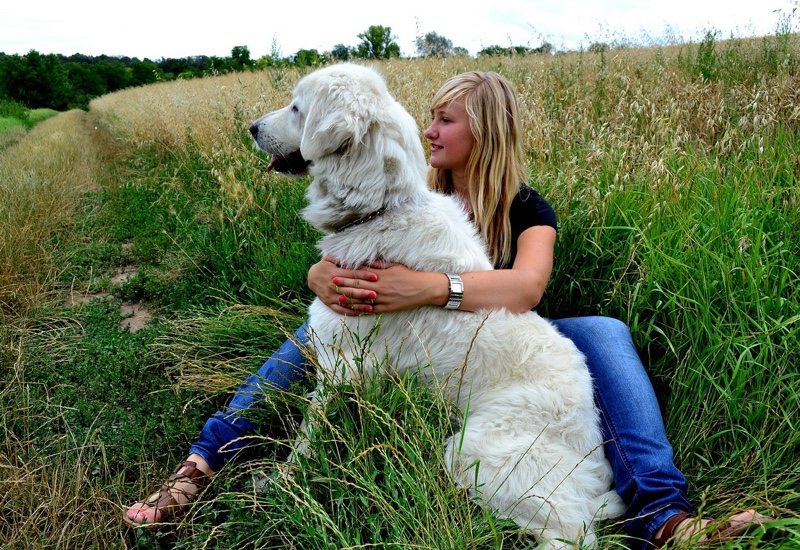Does My Dog Have Asthma?
If your dog is coughing, wheezing, and struggling to breathe, they may have asthma.
Lymphoma is one of the most common kinds of cancer found in dogs, making up 10-20 percent of all canine cancer cases. It is a cancer of the lymphocytes, a type of white blood cell associated with the immune system.
Lymphoma can start in any organ in the body, but usually, it originates in places that function as part of the immune system, like lymph nodes, the spleen, the liver, and bone marrow. There are over 30 known types of canine lymphoma, and their symptoms can vary.
Typical signs of multicentric or general lymphoma, the most common form of this type of cancer beginning in the lymph nodes, include the following:
Other common types of lymphoma are cutaneous lymphoma, or lymphoma of the skin, alimentary or gastrointestinal lymphoma, which is lymphoma of the stomach and/or intestines, and mediastinal lymphoma, which involves organs in the chest, like lymph nodes or the thymus gland.
Lymphoma is usually diagnosed with a biopsy, bloodwork, other lab work, like a urinalysis, to check that organs are functioning properly. A biopsy may involve taking tissue from the affected area to examine it for cancer cells, or extracting cells directly from a lymph node with a needle and studying them under a microscope.
Canine lymphoma is technically incurable
Early detection and treatment of lymphoma can extend a dog’s life or cause the cancer to go into either partial or complete remission for a period of time. A partial remission means that the cancer has been reduced by at least 50 percent. Complete remission is when the cancer becomes undetectable in a screening.
However, when a dog’s lymphoma goes into remission, it will inevitably come back at some point. Lymphoma cancer cells become more resistant to chemotherapy as time goes on, so canine lymphoma is technically incurable.
With treatment, 40-45 percent of dogs with lymphoma live up to a year. But, less than 20 percent of dogs with this progressive cancer live two years after it’s found. The life expectancy of dogs with untreated lymphoma is four to six weeks.

Dogs with lymphoma will need to see a cancer specialist, called a veterinary oncologist. The oncologist will make treatment recommendations based on the stage and aggressiveness of the cancer. Chemotherapy is most commonly used to treat forms of lymphoma. However, a combination of treatments may be recommended in some cases, namely chemotherapy, surgery, and radiation therapy.
Chemotherapeutic drugs are usually administered to dogs through a vein to kill cancer cells and prevent them from multiplying. Most dogs tolerate these drugs well, but they might experience some of the same side effects that people do from chemotherapy, like nausea, vomiting, lack of appetite, diarrhea, and hair loss.
If the cancer is still localized, affected lymph nodes or other tumors may be surgically removed.
Radiation therapy involves the penetration of gamma rays in the area of the Lymphoma as a means of stopping cancer cells in their tracks.
Radiation therapy is painless for pups, but they may experience skin irritation in the targeted area. An anti-itch medication might be prescribed to help, or they may be given a cone to wear in order to prevent scratching and further skin aggravation, which could be damaging.

Coping with lymphoma is very difficult for pet parents and their beloved pet. If your pup has lymphoma, there are things you can do to calmly guide them through the end of their life and minimize their discomfort and distress.
Dogs don’t always express pain through whimpering. Instead, they may act reclusive, lazy, and aloof, no longer getting excited about things they normally enjoy, like playtime and food. If your dog is suffering, they might stop eating and drinking completely or be very picky about their food. You may also notice your dog gasping for breath at times or panting excessively.
Euthanasia is a painless and peaceful way to end your dog’s suffering. And, it may become the most humane choice a pet parent can make for a pet suffering from an incurable and debilitating disease like lymphoma. Euthanized animals have no awareness that they’re dying. The process is much like general anesthesia and takes only 10 to 20 seconds.
To complete the procedure, your dog will be injected with a sedative, followed by the special medication. Your vet can help you decide when the time is right to put your dog to sleep. It’s usually recommended to do so when you can see that your pet’s pain is outweighing their moments of comfort and joy.
If you choose not to euthanize your dog, your veterinarian can suggest the best pain medications, dietary choices, and human interactions to make your dog as comfortable as possible. If you’re considering this option, try discussing all the pros and cons with your veterinarian before making your final decision. A pet loss counselor may provide some valuable guidance, as well.
It always helps to prepare financially for illnesses. Pet insurance can help you cover veterinary costs later down the road if your dog becomes sick. Visit here to learn more.